Charles Theodore Frere (1814-1888)
Get a Frere Certificate of Authenticity for your painting or a COA for your Boucher drawing or print.
For all your Frere artworks you need a Certificate of Authenticity in order to sell, to insure or to donate for a tax deduction.
How to get a Frere Certificate of Authenticity is easy. Just send us photos and dimensions and tell us what you know about the origin or history of your Frere painting, drawing or print.
If you want to sell your Frere painting, drawing or print use our selling services. We offer Frere selling help, selling advice, private treaty sales and full brokerage.
We have been authenticating Frere and issuing certificates of authenticity since 2002. We are recognized Frere experts and Frere certified appraisers. We issue COAs and appraisals for all Frere artworks.
Our Frere paintings, drawings and print authentications are accepted and respected worlwide.
Each COA is backed by in-depth research and analysis authentication reports.
The Frere certificates of authenticity we issue are based on solid, reliable and fully referenced art investigations, authentication research, analytical work and forensic studies.
We are available to examine your Frere painting, drawing or print anywhere in the world.
You will generally receive your certificates of authenticity and authentication report within two weeks. Some complicated cases with difficult to research Frere paintings or drawings take longer.
Our clients include Frere collectors, investors, tax authorities, insurance adjusters, appraisers, valuers, auctioneers, Federal agencies and many law firms.
We perform Charles Theodore Frere art authentication, appraisal, certificates of authenticity (COA), analysis, research, scientific tests, full art authentications. We will help you sell your Charles Theodore Frere or we will sell it for you.
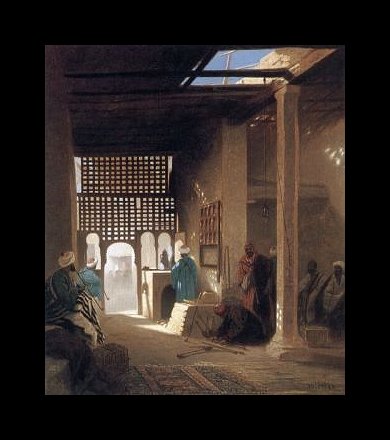
Charles Theodore Frere was the son of a music publisher and a notable Orientalist painter. He was born in Paris in 1814, and initially studied under Jules Coignet, the historical painter. He then studied under Camille Roqueplan, the painter of landscapes, historical subjects, and genre scenes. He began his career painting interiors, and views of the French countryside. His inspiration was derived from his trips around the regions of Normandy, the Alsace, and Auvergne. The first painting he exhibited at the Salon was a landscape of the Alsace region, entitled “View of the Environs of Strasbourg.”

Frere visited Algeria in the 1830’s, becoming infatuated with the Oriental other, as did many of his contemporaries. He rapidly departed from the genre Realism in which he had been trained (influenced by Gerome) and later traveled widely in the Arab world. There was a ready market for his stock images in Europe; caravans arriving, resting and leaving, market and mosque scenes, and of course the Nile. He was uninterested in the monumental past, preferring atmospheric scenes of daily street life. He also eschewed the subject of the harem, unlike many bolder artists. During this first trip to Algeria he produced several large paintings for the King of Wurttemberg. In 1841, he sent two paintings to the Salon, which were later purchased by Louis Philippe.
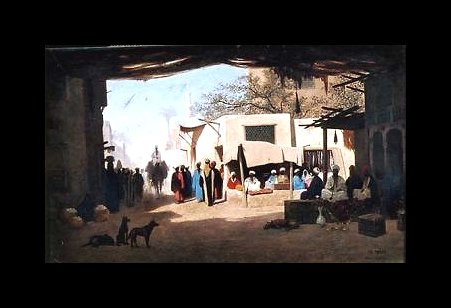
In 1851, he took a much longer trip to the Orient which lasted eighteen months. During this trip, he traveled to many different countries, including Greece, Constantinople, Asia Minor, Syria, Palestine, and Egypt. This journey provided him with an enormous amount of ideas, and inspiration for the paintings which he was to produce during the 1850s.
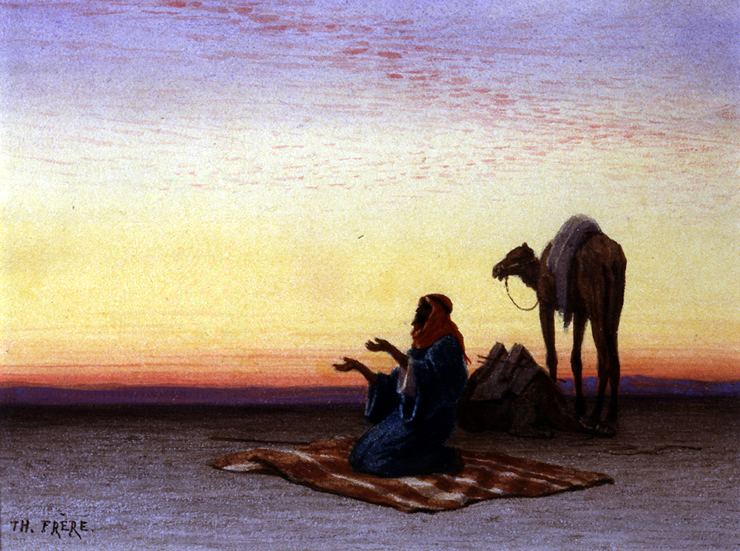
His final trip to the Eastern Mediterranean was in 1869. He formed part of the party of the Empress Eugenie on her trip to the Orient. During this trip he produced an impressive number of watercolors. Art critics have commented that this medium allowed him to capture the luminous, bleached tonalities of the landscape.
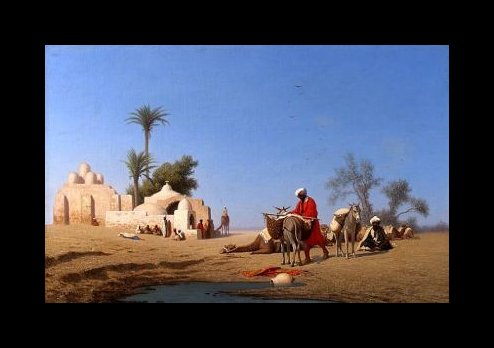
An artist of the second rank, he nonetheless carved a niche, capturing the strange (to Europeans) diaphanous light and dust effects of the Near East. An indifferent figure painter, he rarely produced portraits of the locals, preferring middle-distance stock representations. His younger brother, Pierre Edouard Frere (1819-1886), a pupil of Hippolyte Delaroche, was an influential Realist genre painter specializing in working class people, suffused by a sentimental regard for the downtrodden poor. Theodore Frere adopted the Ottoman honorific “Bey”, and often signed his works “Th. Frere Bey”.
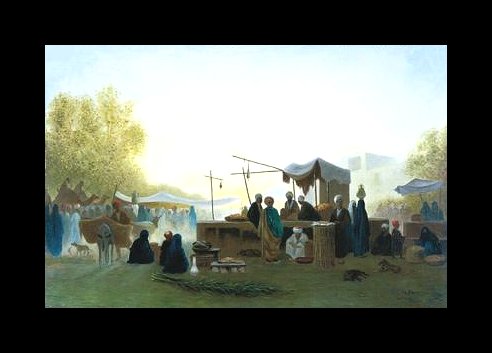
Frere’s watercolors were almost invariably small studies for his oils, the former often done plein air, and the latter in the studio. The subject painting is much larger than almost all of Frere’s watercolors and is far less impressionistic. It has been proven that Frere did not use gouache, nor did he use gouache in combination with watercolor. He did on occasion heighten with white in sketches. Frere’s watercolor technique was quite light and transparent, unlike some of his oils. In other words, his oils often show solid planes of color, but his watercolors rarely do, and when they do the opaque color is used only in certain parts.
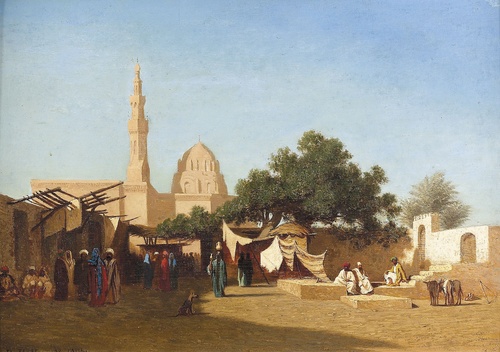
Frere did not paint quasi-portraits in this manner, least of all with a breast exposed. Frere, as noted above, painted conventional middle-distance public social activity. Frere’s vegetation harkened back to 18th Century representation. Theodore Frere also had a very consistent signature (see below), essentially printed, usually TH. FRERE, and sometimes TH. FRERE BEY. Frere’s watercolors range on average from $500 to $2,000 at auction, reflecting the facts that they are small studies for his preferred oils. His oils are worth far more.
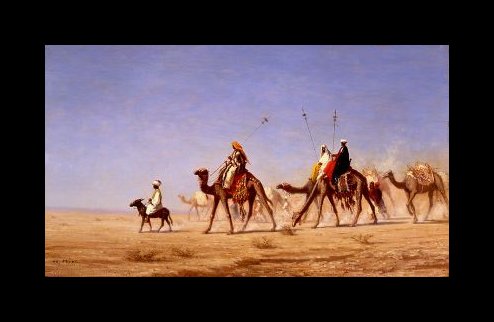
A particularly well known painting of his is, “Jerusalem View from the Valley of Jehoshaphat,” which hangs in the Metropolitan Museum of Art. In this painting, Frere depicted the prominent features of the city, such as the Golden Gate, the Church of the Holy Sepulchre, and the Hamra minaret. The painting also depicts a camp in the foreground, and he reproduces the tents, and the costumes of the Arabs, with precise detail.
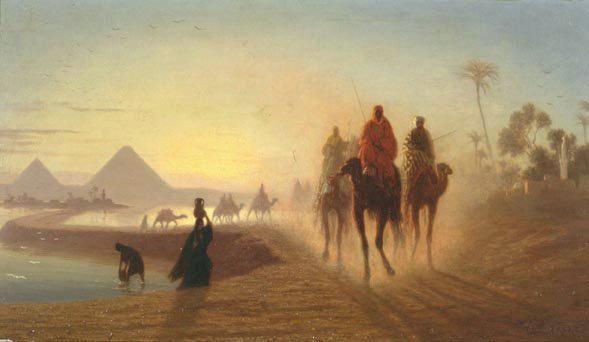
Frere also designed woodcuts, and lithographs using Oriental subject matter, such as his imaginary view of the Arab in Paris, for Desnoyer’s, “Les Etrangers a Paris.” A number of his Oriental paintings are at the Palais de Champs Elysee. Some of his paintings were also bought by American collectors, as he was a close friend of the American dealer, George Lucas. Still wondering about an Orientalist painting in your family estate? Contact us…it could be by Charles Theodore Frere.
